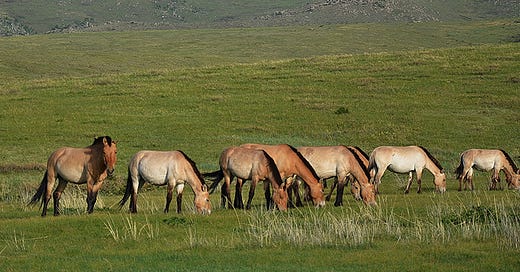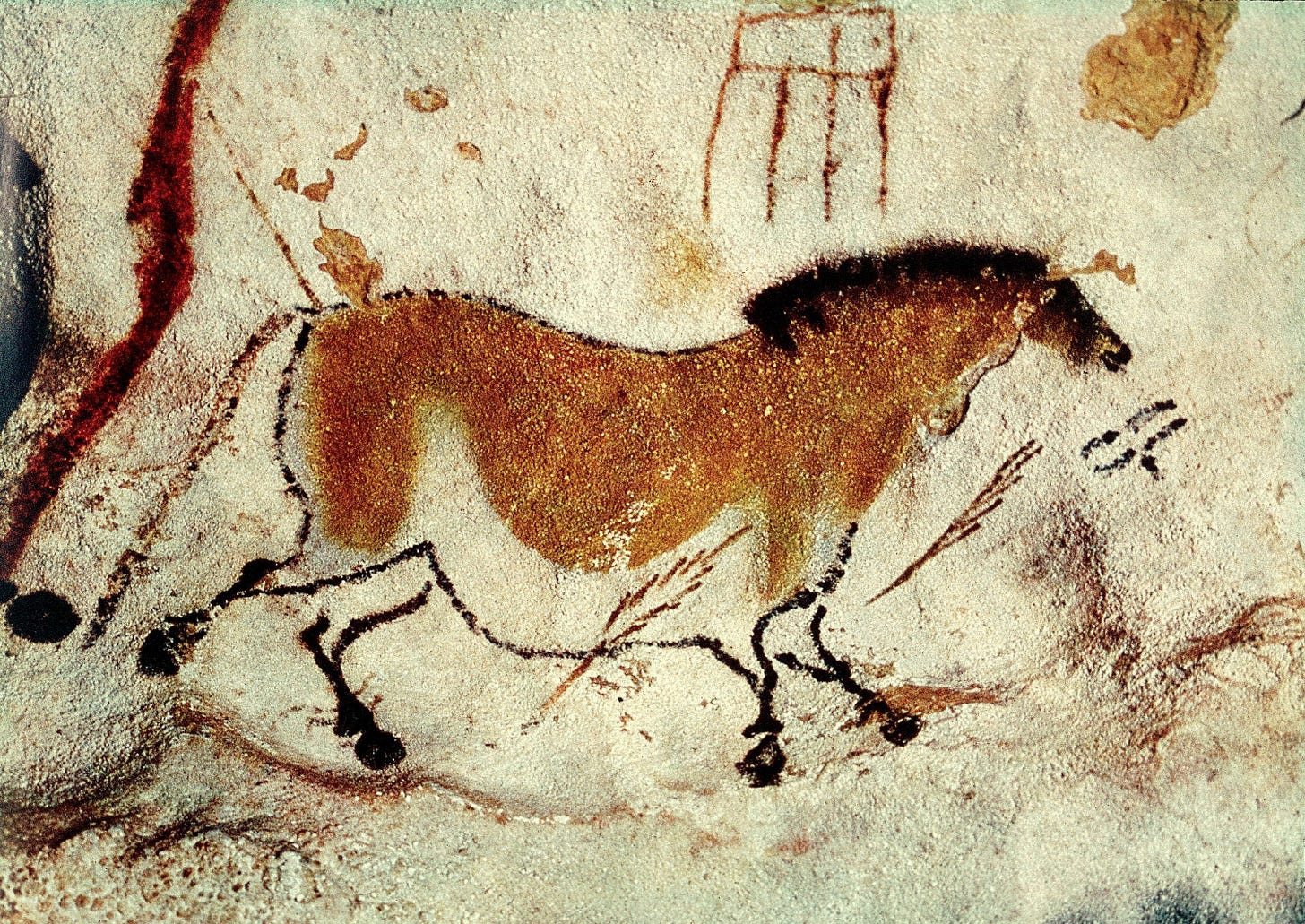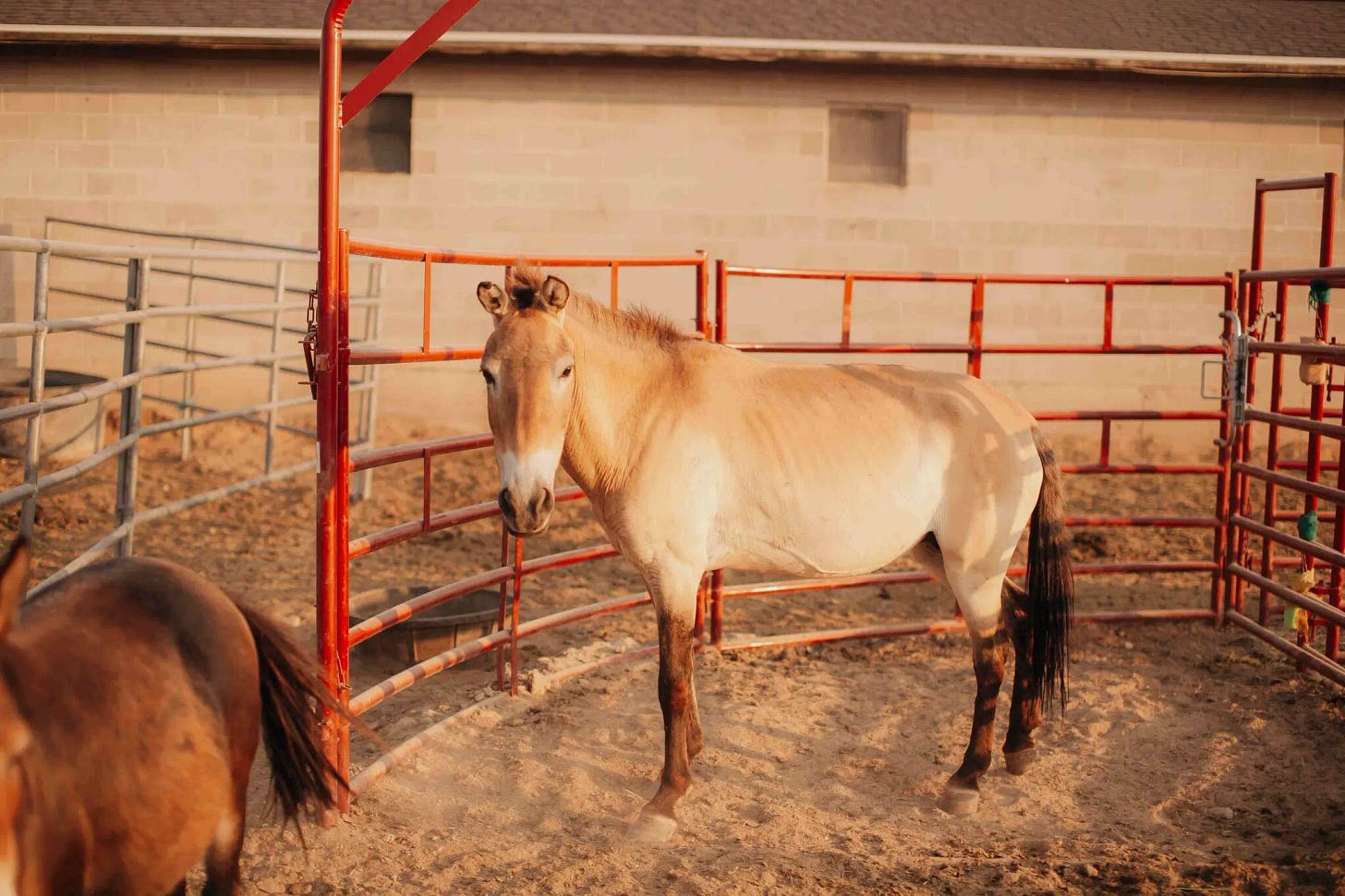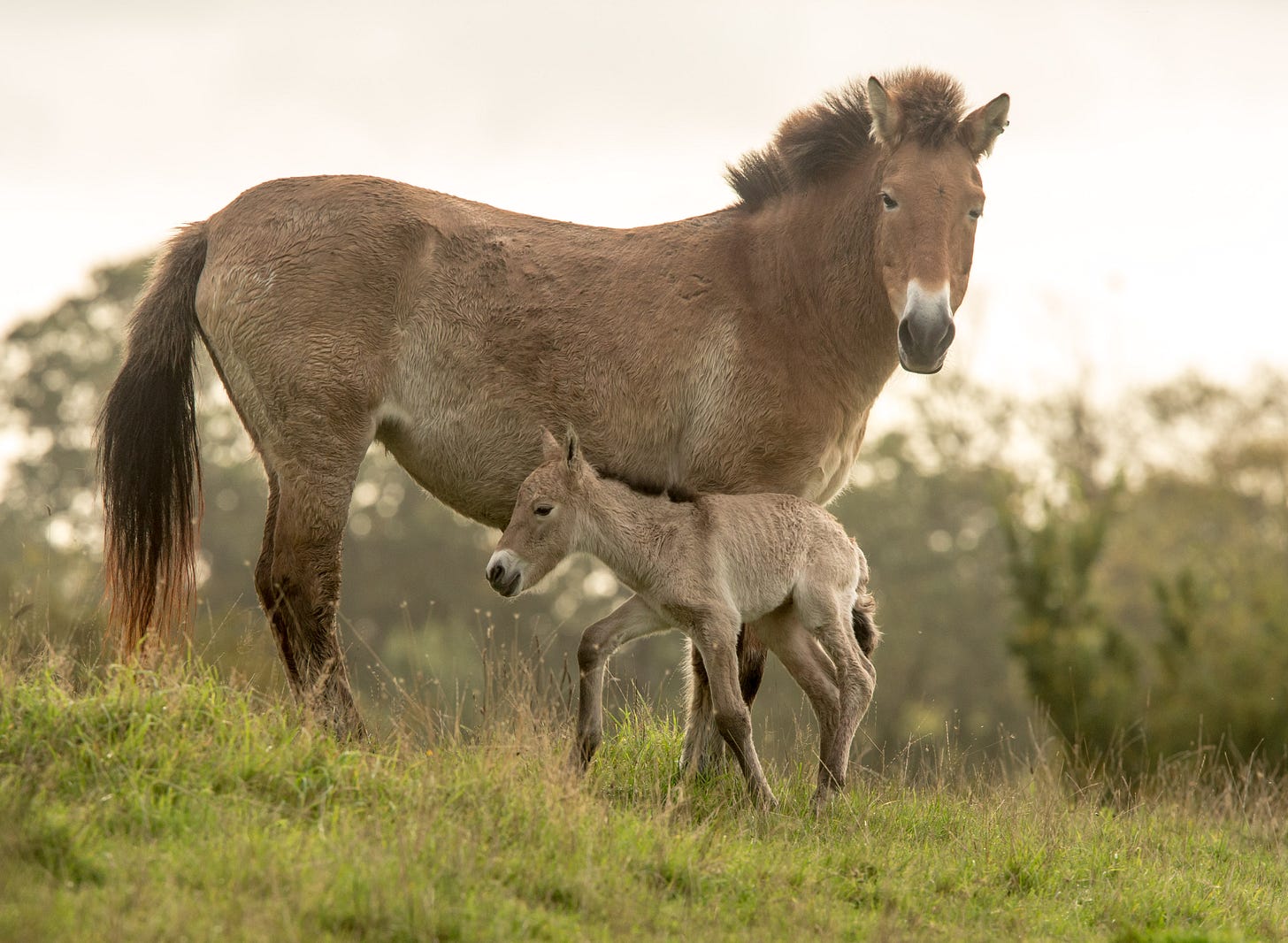The Last Wild Horse Breed
How a rare breed once thought extinct in the wild ended up in a Kansas livestock auction.
It was one of those articles that was sent to me many times because of the subject matter, but this one truly stirred up many childhood rabbit holes of researching the history of the horse and the wild horse herds in the American west and pockets along the Eastern coast. Like in Misty of Chincoteague, all wild horses tend to create stories of their own that capture our imaginations. This particular story first appeared in the Times where no better writer than journalist Sarah Maslin Nir (and author of Horse Crazy that every horse girl should read) investigated how two of the rarest wild horses on earth ended up in rescues.
This one truly sounds like it’s due for it’s own book or movie: a scruffy little horse, thick-maned and wary-eyed, rescued from a livestock auction lot in rural Colorado. His name is Shrek. And he’s no ordinary mustang — he’s a Przewalski’s horse, also known as Takhi (meaning spirit) or Mongolian Wild Horses. It’s the last truly wild horse breed on Earth, a species once declared extinct in the wild. And Fiona, another Przewalski’s horse who was surrendered to a rescue in Utah — the discoveries stirring up fascination and a wave of questions about how the rarest horse on the planet ended up tangled in America’s horse slaughter pipeline.
In early 2024, Hannah Huckabay, a seasoned horse rescuer from Aurora, Colorado, spotted an unusual "mule" listed at a Kansas livestock auction. The animal's upright mane and dun coloring struck her as peculiar, and trusting her instincts, she purchased the horse for $1,375 and brought him home. Inspired by the horse's unique appearance and perhaps a touch of humor, they named him Shrek.
Around the same time, in Utah, a mare with similar features was surrendered to the Lazy B Equine Rescue and Sanctuary. The previous owner found her untrainable and assumed she was a hinny—a hybrid of a horse and a donkey. The rescue staff, noting her distinctive characteristics, decided to name her Fiona, a nod to the recently discovered Shrek.
Przewalski’s horses, with their upright manes, dun coloring, and thickset builds, once roamed freely across Mongolia’s vast steppe. But by the late 1960s, they had disappeared from the wild. The only survivors were those living in captivity — mostly in European zoos and carefully managed breeding programs. Conservationists began painstakingly reintroducing them to Mongolia in the 1990s, but the species remains endangered and tightly monitored.
In the Times article, Nir interviewed Christian Kern, the zoological director at Berlin’s Tierpark, who shared his theory of how Shrek and Fiona might have escaped the otherwise carefully monitored conservation programs.
“Mr. Kern said the international Przewalski's breeding program carefully manages the bloodlines of the original dozen horses, to best bolster the breed. But, he said, a small number of animals born in zoos are released into private hands because they are not genetically useful to that population. If those animals had babies, they might never be recorded in a studbook.
And now, the silver lining in the horses’ saga: The very existence of surplus animals like Shrek and Fiona can be seen as a sign that the conservation effort has, against all odds, worked. The herd, which once numbered only 12 on the planet, is now perhaps robust enough that not every animal must be closely tracked.”
The journey of these horses through the livestock auction circuit is as convoluted as it is curious. The private hands that Mr. Kern mentioned have to obtain special permits in order to keep the horses, but that’s certainly not where they ended up. Shrek's path began in Cedar City, Utah, where he was sold at auction for a mere $90. He changed hands multiple times, eventually ending up in Kansas before the Huckabays brought him to Colorado. Fiona's history is less detailed, but she too passed through the auction system before being surrendered to Lazy B.
Every year in the United States, over 20,000 horses are shipped to slaughter — mostly to Canada and Mexico — under a legal loophole that allows the export of live horses for meat, which is illegal in the US. They come from all backgrounds: aging riding horses, injured ranch ponies, backyard pets, and now, apparently, critically endangered wild horses. Many are sold through kill pens and auctions, and Shrek and Fiona were both misidentified as mules or hinnies, making them vulnerable to this grim fate.
While Fiona tragically passed away due to organ failure shortly after her rescue, Shrek continues to thrive under the care of the Huckabays. His story has garnered significant attention, bringing awareness to the importance of Przewalski's horse conservation and the broader issues within the horse auction system.
Conservation efforts to protect and rebuild Przerwalski’s horse populations are ongoing. Organizations like the International Takhi Group in Mongolia and Mongolia’s Hustai National Park are working tirelessly to protect and reintroduce Przewalski's horses into their native habitats. Public programs, such as "Adopt-a-Foal," allow individuals to contribute directly to these efforts (we contacted Hustai, where they told us that it costs $500 to cover the costs for caring for one foal through their life on the sanctuary).
Here in the states, the first cloned Przewalski’s horse, Kurt, was born in Texas using cryopreserved DNA in 2020. A second, Ollie, followed in 2023. All of these efforts are essential to diversifying the gene pool of a population descended from just a few dozen zoo horses. Without this, the species faces a slow genetic decline even as its numbers grow.
Shrek, with his thick neck and stubborn gait, may not look like a poster child for conservation. But his and Fiona’s story cuts through the abstract jargon of "species recovery" and forces us to reckon with the messy, accidental ways in which nature collides with bureaucracy, with commerce, and with human carelessness. The story of Przewalski’s horses was never supposed to cross into the American West. And yet, here they are — being rescued one by one, almost by miracle.
Aurélie and I both had the immense pleasure of taking rides through the Mongolian steppe on ponies who bear incredible likeness to their Przewalski ancestors. We’ll relive some of those adventures in our next Field Notes!










